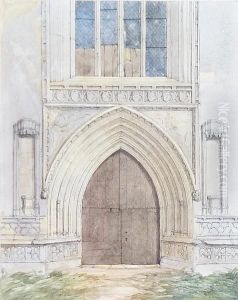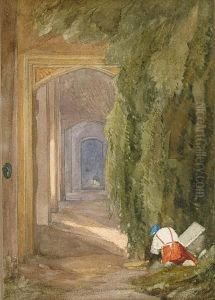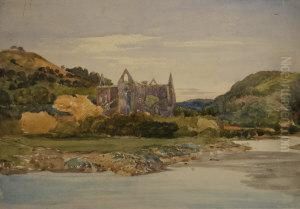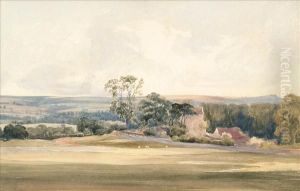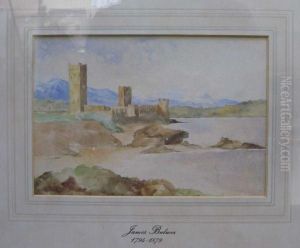James Bulwer Paintings
James Bulwer was an English artist and naturalist known for his detailed and sensitive watercolor paintings, particularly of landscapes and marine scenes. Born on March 28, 1794, in Aylsham, Norfolk, he was part of the early 19th century British art and scientific exploration milieu. Despite his significant contributions to art and natural history, Bulwer's work has often been overshadowed by his contemporaries, making him a somewhat obscure figure in the annals of British art history.
Bulwer's education and early career were closely tied to his interests in the natural world. He initially studied theology at Cambridge University, intending to pursue a career in the church, a common path for scholars of his time. However, his deep passion for the natural sciences and art led him down a different path. After completing his studies, he chose not to take up a religious post but instead dedicated himself to his interests in ornithology, botany, and, most notably, painting.
As an artist, Bulwer was particularly adept at capturing the nuances of the natural landscape and the sea. His travels, particularly to the Mediterranean, the West Indies, and various parts of Europe, provided him with a wealth of subject matter. His works are characterized by their detailed realism, delicate color palettes, and the ability to evoke the atmosphere of the locations he depicted. Unlike many of his contemporaries who focused on grand, romanticized landscapes, Bulwer's approach was more intimate and observational, often focusing on quieter, less dramatic scenes.
Despite his talent and the quality of his work, James Bulwer never achieved the level of fame or recognition enjoyed by some of his peers. He exhibited occasionally, including at the Royal Academy and the Society of British Artists, but for much of his life, his art was something of a personal pursuit rather than a public profession. In addition to his paintings, Bulwer contributed to the field of natural history through his collections and illustrations of bird specimens, some of which were considered important contributions to ornithological studies at the time.
James Bulwer passed away on May 4, 1879, in Aylsham, the town of his birth. Though his work was somewhat overlooked during his lifetime and in the years following his death, recent interest in Victorian art and science has led to a reevaluation of his contributions. Today, Bulwer's paintings are appreciated for their technical skill, their beautiful rendering of natural scenes, and their role in the broader context of 19th-century British art and science. His works can be found in various collections and museums, serving as a testament to his dedication to capturing the beauty of the natural world.
